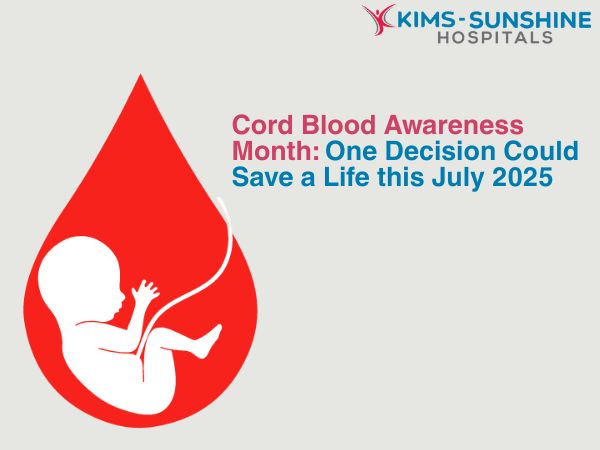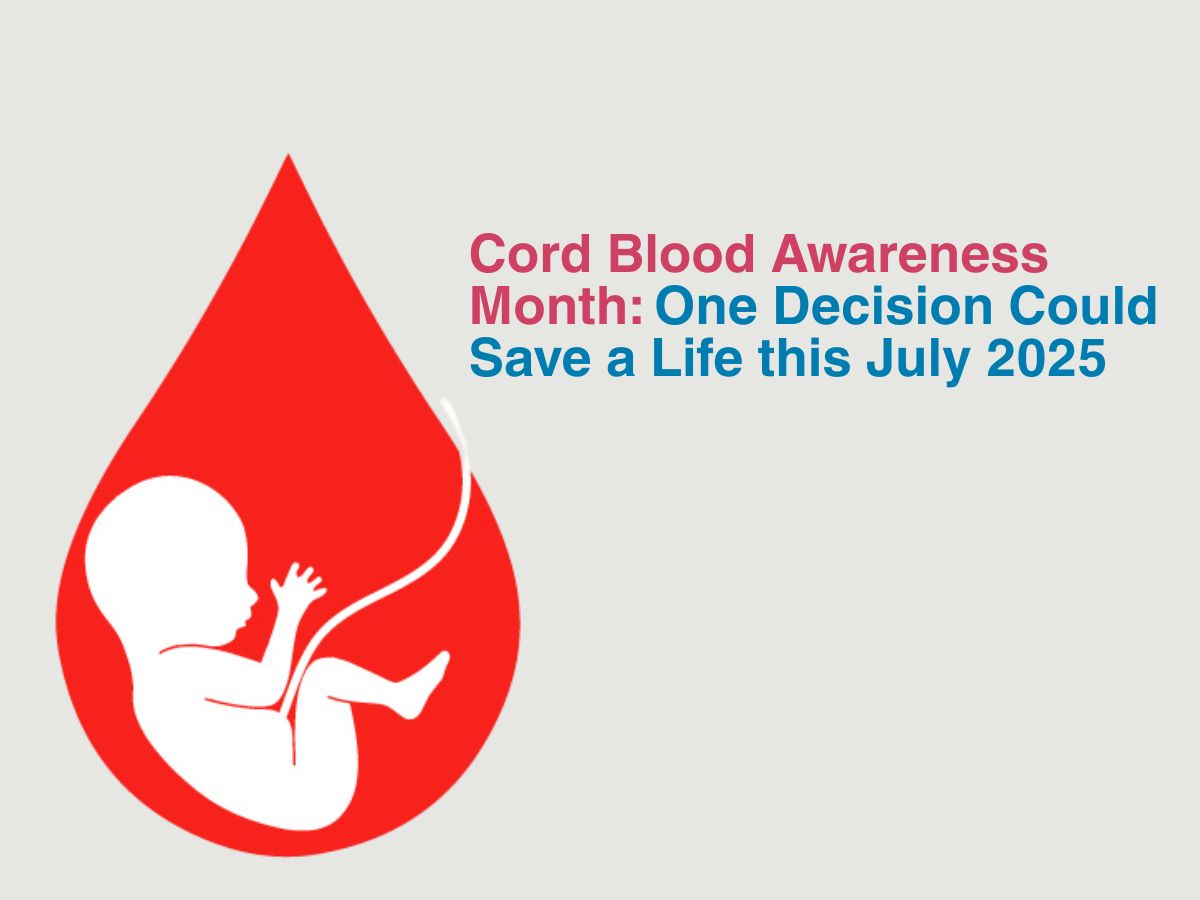
Cord Blood Awareness Month: One Decision Could Save a Life this July 2025
Introduction- What Is Cord Blood And Why Is It Important?
Cord blood is not regular blood. It’s the first imprint of healing a newborn carries. Rich in haematopoietic stem cells, it can regenerate the blood and immune systems. These are not ordinary cells; they are originator cells – cells that can rebuild what disease has broken, that can become new blood, new marrow and even give new hope. While once dismissed as waste, today it is recognised as a therapeutic marvel. In India, where donor registries are limited and matches harder to find due to vast genetic diversity, cord blood holds even greater value. It’s not a backup plan. It’s a lifeline waiting to be extended.
Diseases Treated With Cord Blood Stem Cells
Cord blood has been used to treat over 80 conditions. Some of them include:
- Leukaemias and lymphomas, where the body’s blood-making cells go rogue
- Thalassaemia, a genetic disorder seen often in Indian communities, where red blood cells fail to carry enough oxygen
- Sickle cell anaemia, where crescent-shaped cells cause pain, organ damage and more.
- Severe aplastic anaemia, a condition where the bone marrow stops producing new cells
- Certain metabolic and immune disorders, which otherwise leave children vulnerable to everyday infections or developmental delays.
How To Donate Cord Blood After Delivery
To donate cord blood is to bottle a possibility. It doesn’t require surgery. No risks. No harm to mother or baby. It simply requires awareness and willingness. Here’s how the process typically unfolds in India:
1. Choose a Cord Blood Bank
There are two kinds. Public and private.
- Public banks accept donated cord blood for use by anyone who needs it. It’s a gift to the larger community.
- Private banks store the blood exclusively for your family, in case of future need. It comes with a cost, but also with personal access.
2. Register In Advance – It’s best to sign up before your 34th week of pregnancy. Hospitals and labs need time to coordinate collection and ensure safe handling.
3. Collection During Delivery – After your baby is born and the cord is clamped, the remaining blood in the umbilical cord and placenta is collected using a sterile kit. It takes less than 10 minutes. Your baby doesn’t feel a thing. You may not even realise it’s happening.
4. Testing, Processing and Freezing – The collected blood is tested for safety, then cryopreserved at ultra-low temperatures where it can be stored for years without losing its strength.
In public hospitals across India, awareness is slowly increasing, but much work remains. Far too often, the cord is still discarded like medical waste. But with awareness, we can shift the outcome.
Cord Blood Vs Bone Marrow For Stem Cell Treatment
Both bone marrow and cord blood carry stem cells. But they don’t walk the same path.
Bone marrow is like a seasoned soldier. Powerful, reliable, but picky. It requires a near-perfect match, often from a sibling. The donation process involves needles, anaesthesia and prolonged hospital stays. Cord blood, on the other hand, is younger and more adaptable. It asks less of the recipient’s immune system. It’s easier to match, easier to store and already available at the time of need. Cord blood doesn’t replace bone marrow. But in many cases, it can step in when time is scarce and hope is stretched thin.
Conclusion
In Indian hospitals, where technology moves faster than public awareness, cord blood still feels like a luxury. But it is not. It is simply medicine with foresight. The kind that doesn’t wait for a diagnosis to prepare. So if you’re expecting or if someone in your circle is, ask the question. Talk to your gynaecologist. Speak to your hospital. Consider donation or storage not as a cost, but as a contribution to life itself. Because in that final moment of delivery, when your baby enters the world, something else quietly exits and with one thoughtful decision, it could carry you or someone else into their tomorrow.







